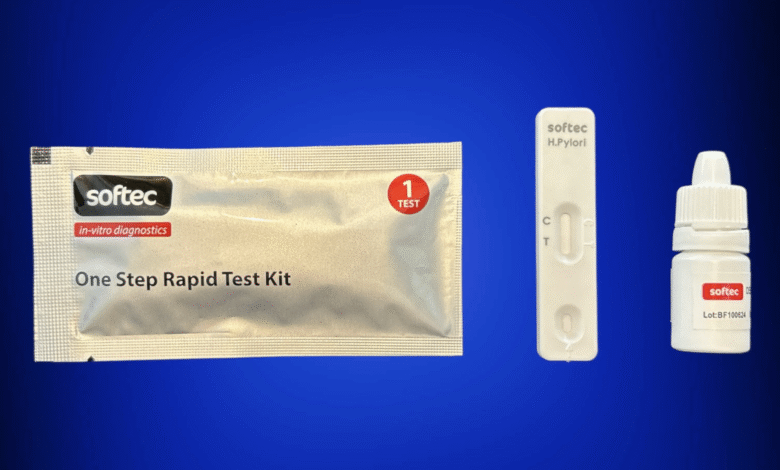Inside Diagnosis: Tools That Power Modern Medical Detection

There are such instruments in the complex world of the modern healthcare field that do not make a noise but are extremely important in diagnosis. Such tools do not attract the masses of people, but they support almost all the outcomes of patients. Some of them include precision tools and quick testing solutions which facilitate early diagnosis and proper treatment.
Specifically, the endoscope insertion tube and infection disease test kit stand as cornerstones of medical diagnostics. Whereas one can be used to visualize internally, the other can be used to identify pathogens rapidly. As a combination, they are two highly different technologies, but they fulfill the same purpose as they provide correct and on-time diagnoses that guide patient care worldwide.
Endoscope Insertion Tubes: Guiding Precision in Internal Examinations
Endoscopes are the important devices in contemporary medicine, which enable doctors to observe the human body inside without surgical cuts. At the heart of their function is the endoscope insertion tube—a flexible, yet highly engineered component that navigates through natural body pathways such as the esophagus, colon, or respiratory tract.
The endoscope insertion tube is responsible for reaching the target site while transmitting visual data to the camera head. It has essential subunits such as the image sensor wiring, light guide fiber, water/air channels and suction pathways. It should have the flexibility to be able to negotiate through the small and curved anatomical structures but at the same time be rigid enough to enable it to be navigated under control.
Such a combination of flexibility and rigidity is due to careful material selection and engineering. The outer layer is normally a strong polymer material that is not easily broken down by chemicals, or through repeated sterilization, and the internal components are accurately aligned to ensure signal integrity and fluid control.
Durability is paramount because insertion tubes undergo frequent bending and torque as doctors manipulate them during procedures. They wear out over time and can also develop micro-cracks and thus regular inspection and maintenance is necessary. Hospitals must frequently replace or repair insertion tubes to preserve the endoscope’s performance and patient safety.
Moreover, advancements in the design of endoscope insertion tubes now support improved ergonomics for physicians, reduced patient discomfort, and greater diagnostic accuracy. Even newer models have included more sophisticated articulation mechanisms and embedded sensors that give real-time feedback.
Infectious Disease Test Kits: Rapid Tools for Global Health Challenges
The pathogens that are constantly threatening global health systems and endangering people, including seasonal flu, emerging viruses such as COVID-19, and others, have never shown a more urgent need in developing rapid diagnostic solutions. This is where the infection disease test kit comes into play. These kits are highly efficient, compact and user-friendly and are important in the identification and control of outbreaks both in the clinical and community settings.
An infection disease test kit typically contains all necessary reagents and components to detect specific pathogens in biological samples such as blood, saliva, or nasal swabs. The formats range all the way through lateral flow immunoassays and rapid antigen tests to molecular diagnostics based on PCR. All of these are optimized to a certain level of sensitivity, target pathogen, and time-to-result need.
These kits give real-time diagnostic information used to make treatment decisions in emergency rooms, clinics, and field hospitals. Rather than having to wait days to get the results of lab tests, doctors can diagnose malaria, dengue, flu, or COVID-19 in minutes or hours. This is not only an important ability to initiate treatment in time but also to prevent the spread of infectious diseases.
The design of infection disease test kits reflects an ongoing commitment to portability, ease of use, and accuracy. A number of them are now in point-of-care (POC) formulation, such that nurses, technicians, or even trained community workers can conduct tests without the requirement of sophisticated laboratory structure. This accessibility may be the difference between outbreak and containment in low-resource settings.
In addition, future-generation kits are also being developed due to ongoing innovation in microfluidics, biosensors and molecular biology to provide multi-pathogen detection, digital data capture and cloud based reporting. These abilities improve local and national disease surveillance.
Different Tools, Same Goal: Enabling Early and Accurate Detection
While the endoscope insertion tube and infection disease test kit differ in form, function, and clinical application. But they both represent precision tools designed to enhance diagnostic accuracy. One is used to see the inside details of structures; the other is used to see microscopic pathogens in body fluids. The two are intended to decrease the period of diagnosing, enhance the effect of the treatment, and decrease complications.
In gastroenterology, an endoscope equipped with a functional insertion tube may detect abnormal tissue during an early cancer screening. At the same time, in the infectious disease ward, a rapid test kit can determine the existence of tuberculosis or hepatitis and place the patient under isolation and treatment. The common ground lies in the aim: to provide credible diagnostic figures as soon as it is possible.
The two tools require stringent quality assurance, regulatory compliance, and education of healthcare workers as well. Whether it’s ensuring proper insertion tube sterilization or accurate test kit usage, operational discipline is key to maintaining the integrity of medical diagnostics.
With the tendency of healthcare to shift to more preventive and individualized models, the combination of physical diagnostic devices such as endoscopes with biochemical diagnostic devices such as disease kits is becoming the norm. Internal imaging is now being coordinated in hospitals with laboratory testing to develop comprehensive clinical portraits of patient health.
Quality, Safety, and Innovation in Medical Testing Equipment:
Functionality is not the only factor that defines the medical device landscape but also the reliability, safety, and international standards compliance. For both endoscope insertion tubes and infection disease test kits, rigorous testing, validation, and certification are mandatory before deployment.
Insertion tubes undergo mechanical endurance testing, biocompatibility assessments, and sterility validation. In the same manner, the disease test kits should have minimum levels of sensitivity, specificity, and cross-reactivity. Regulatory agencies such as FDA, EMA, and WHO are in the middle of the situation to guarantee the consistency of the performance of these devices in clinical settings.
Innovation is also changing the two areas. Smart endoscope parts now enable remote diagnosis and video recording and AI-based test kits can interpret results through mobile apps, providing immediate interpretation and education of the patient.
These developments make sure that diagnostic tools do not only react, but are proactive- giving healthcare professionals more information, quicker decisions, and better patient outcomes.
Conclusion:
Every correct diagnosis has a series of instruments carefully designed to be precise and reliable. The endoscope insertion tube, though small and internal, facilitates visual access to areas once unreachable without invasive surgery. Meanwhile, the infection disease test kit provides rapid answers when time and clarity matter most.
These devices are the unsung heroes of the medical diagnosis. Be it proving the existence of an infection in a matter of minutes or investigating internal organs in a way never seen before, they provide clinicians the insight necessary to make confident and quick decisions.
In the current high-stakes, high-pressure medical world, life and death may be a matter of timely and accurate diagnostics. As long as the healthcare industry keeps investing and learning about the importance of these tools, it will take a step closer to its end goal: early detection of disease, proper treatment, and prevention.




